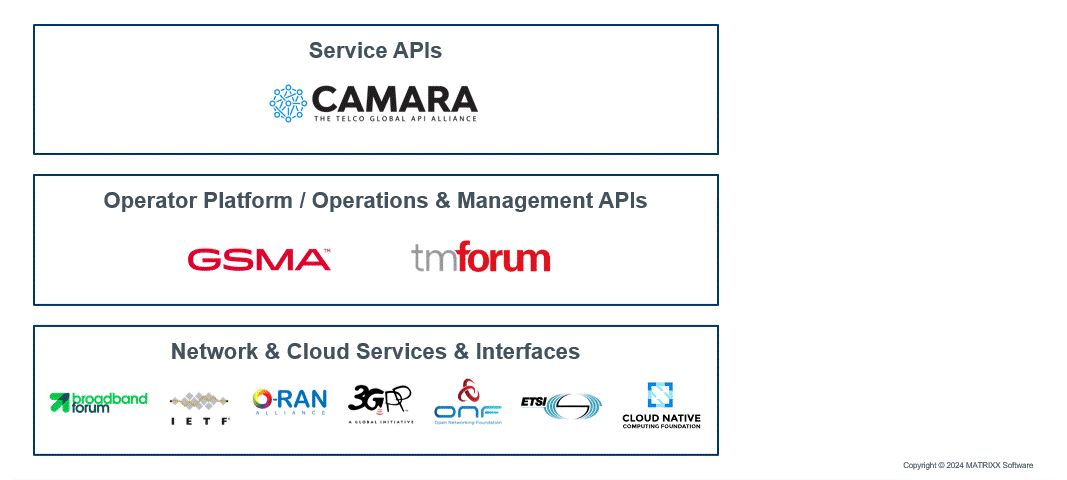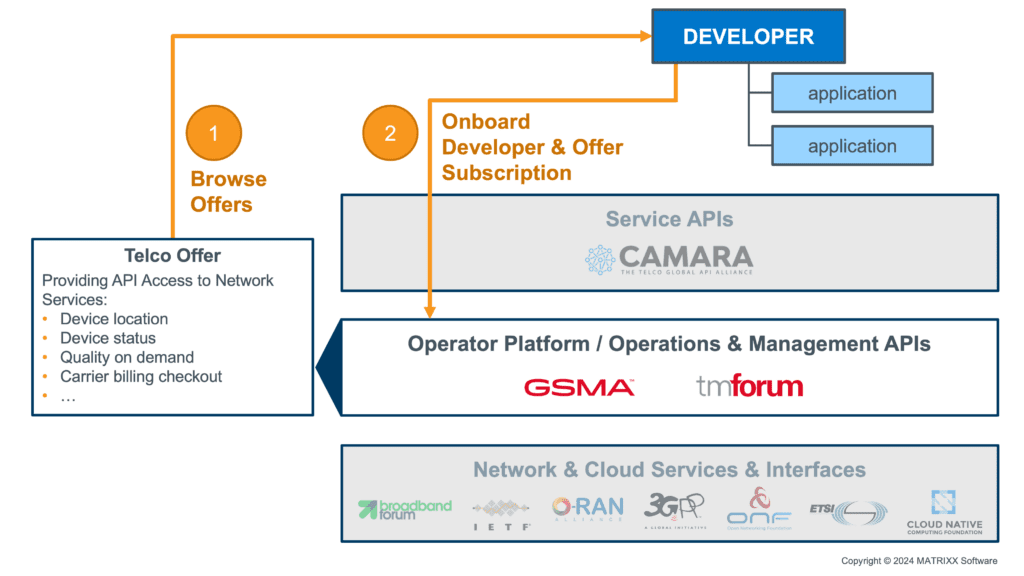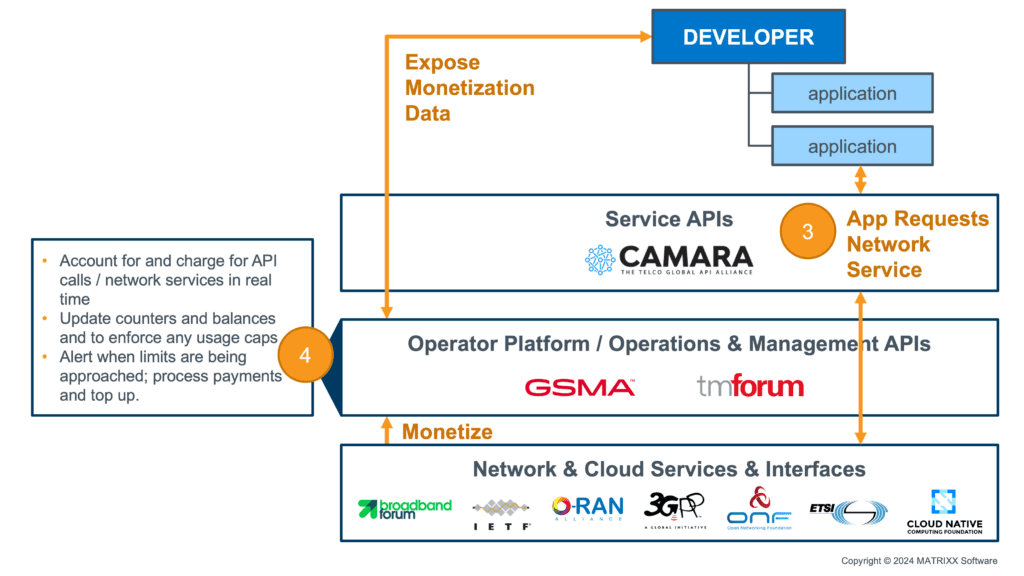- Product
Product
MATRIXX Dynamic BillingMATRIXX Converged Charging and MonetizationMATRIXX Technology PlatformCommercial Benefits
Rapid Commercial InnovationCustomer-Centric SolutionsUnified, Real-Time RevenueDynamic Operational FlexibilityTechnical Benefits
High Performance Core5G CHF | CCS ArchitectureAPI-FirstClick-Not-CodeTrue Cloud NativeUnified Commerce- Solutions
Overview
Unlimited Business PotentialTelecom Segments
ConsumerSmall and Medium EnterpriseLarge EnterprisePrivate Cellular NetworksWholesale- Customers
Overview
Success HighlightsSuccess Stories
DISHiD MobileLiberty Latin AmericaOne NZ - ConsumerOne NZ - EnterpriseOrange PolandOrange Romania- Partners
Be A Partner
Partner Program OverviewPartner Resources
Education & TrainingStrategic Initiatives
Blue Planet | Dynamic Monetization of 5GCelfocus | Digital BillingGoogle | Confidential ComputeIBM | Telco Cloud PartnershipMicrosoft and Blue Planet | Monetize 5G ExperiencesRed Hat OpenShift | Hybrid CloudSalesforce | Digital ExperiencesTallence | Charging TransformationPartner Case Studies
AWS CI/CD Pipeline- Resources
- Company
Are You Ready to Commercialize Your Advanced Networks?
Elisabeth AnderssonMonetization Guidelines for Telco Business Stakeholders
Last year, MATRIXX network operator customers regularly came to us seeking to better understand the details of the evolving and often confusing ecosystem of network APIs: who the players are, how do all the pieces fit together, and who is leading the pack? It was easy to get lost in the sea of acronyms and project names — CAMARA, 3GPP, Open Gateways, Operate APIs, just to name a few!
A year later, we see operators who are now exploring specific deployment scenarios. Network and IT teams are evaluating their options to expose network capabilities and Service APIs directly to developers or to go through third-party aggregators, or both. And perhaps most significantly, today the telco business stakeholders are coming to the table, asking to work through examples for commercializing these services in their new and evolving value chain.
MATRIXX is active in the organizations who have been working on the network API ecosystem and has been working with our customers to build the technical architectures and the commercial frameworks to monetize these advancements. There are a range of scenarios demonstrating methods of commercialize the telco value chain made possible through standardized APIs.
Haven’t Telcos Always Monetized Their Networks?
For over 100 years, network operators have relied on straightforward usage metrics to monetize their services — counting minutes of voice calls, messages sent and megabytes of data consumption. As networks evolved, in spite of service level agreements (SLAs) for enterprise network services, the predominant monetization strategy remained usage-based. Today’s SLA processes generally result in awarding credits rather than creating opportunities for delivering additional value and generating new revenue.
As 5G and edge capabilities expand, there’s a shift towards new industry-specific value chains and more dynamic methods of network monetization. Advanced monetization moves beyond merely counting for consumed network resources and adapts to the evolving telco business models that serve the ever-expanding value chain enabled by exposing network APIs.
Focus On the New Services
Today’s networks are purposefully designed to deliver new capabilities, including customizable network slices, edge computing, quality of service guarantees and more. Network components that are cloud native and dynamically orchestrated facilitate creating innovative services. These services will drive new customer experiences that will change the revenue outlook for CSPs: for consumers and enterprises alike, telcos will be able to deliver granular, hyper-personalized services on demand that they value, stimulating loyalty, spend and endorsements in their communities.
For communications networks, it’s no longer a one-size-fits-all world. The business of operating a network is transforming to keep pace with network evolution: to provide granular and bespoke connectivity and experiences to every subscriber, business and device.
To make this happen, various initiatives are underway to deliver on this promise and they are collaborating with numerous parts that interconnect like puzzle pieces.
A Multi-Party Telco Ecosystem
As we’ve mentioned, there are numerous industry groups collaborating to make this vision a reality sooner rather than later. Here is an explanation of how their work is interrelated and, most importantly, how and where a network operator might begin to explore these new capabilities.
The Linux Foundation’s CAMARA Project is defining a standard set of APIs to enable third parties (developers) to seamlessly access network resources. These standard APIs are critical to enabling these third parties to easily discover, enroll in and use network resources. For example, through CAMARA APIs a developer can identify a device’s location, identify whether edge resources are available, provision Quality on Demand, and request to use a Carrier Billing feature to bill a charge.
The GSMA has established an Open Gateway Initiative that maps the intent-driven CAMARA APIs to the underlying services and resources to ensure they can be efficiently provisioned, used and managed.
The TM Forum APIs and their collaboration projects are focused on telco operations and management standards for onboarding players in a B2B2X value chain, as well as managing and operating the network services and resources effectively: building and promoting offers to aggregators and developers, establishing commercial relationships with them, monetizing their use and managing their balances.
Together, the GSMA and TM Forum telco operations standards focus on operations and management of three critical areas of the evolving value chain:
- For the new services
- For the APIs themselves: how to federate, how to connect the APIs from the gateways to your telco operations and your networks
- For the growing number of parties who will be consuming those services: the third-party developers or the third-party channel partner/aggregator
Finally, there are many organizations defining the services and interfaces for next-generation networks and cloud services. One example is the 3GPP, who has delivered standards for functions like the 5G Network Exposure Function (NEF) that allows operators to securely handle valuable data coming from Application Functions (AF) and enables optimal allocation utilization and monetization of resources and services.
Assembling the Network API Puzzle
The advanced network operator has laid out the operations and management framework, the operator gateway, and defined offers for network services they will expose via advanced operate APIs.
Figure 1: Developer Onboarding (via Operate APIs)
In this example, a developer has identified an innovatoin opportunity in her domain – it could be a game, an application that controls a manufacturing process or a solution for monitoring a remote gas pipeline. To deploy innovations, she needs access to connectivity services that dynamically control latency and bandwidth. She reviews the network operator’s available offers (Step 1 in the diagram above), is onboarded as a customer (Step 2) and chooses the offer that delivers her the necessary service levels and API access, She then can test and program her applications to use them by calling service APIs.
Figure 2: API Use and Monetization (via Service and Operate APIs)
Once onboarded, the developer’s applications access network services through a set of CAMARA APIs (Step 3), federated through operator gateways and tracked and monetized through the network operator’s platform. Monetization is enhanced by real-time charging and expanded revenue functions (Step 4) that:
- Manage counters and balances
- Alert on unusual usage patterns and thresholds
- Trigger payment top-ups and re-subscriptions
- Recognize cost and revenue accurately
- Expose accurate and timely information to the developer to provide an enhanced customer experience
Better If You Can Charge for It
With our singular focus on digital monetization, MATRIXX continues to work with the following groups to advance API commercialization on behalf of our telco customers:
- TM Forum: Our membership involves developing monetization aspects of Open Digital Architecture (ODA) and aligning with the Operate APIs as well as the other ODA assets
- GSMA Operator Platform Group (OPG): We are collaborating to define interoperability with the Camara API, the data requirements for numerous charging scenarios
- CAMARA: We monitor all sub-projects with a monetization impact and map them to our product capabilities and roadmap
- The 3GPP SA5 Charging Group: MATRIXX serves as chair, and we participate across the broader 3GPP to collaborate on developing new standards for charging in 5G and beyond
Do More Than Count API Calls
The growing ecosystem of third parties derives great value from the underlying network services, combined with the customer data that those network services are exposing. Developers are driven to innovate and create applications that provide greater efficiencies and greater experiences for their customers. In this way, network operators enable innovation for other parties and industries, where they offer undisputable value.
Contact us today for a demonstration of how network operators can effectively commercialize that value.
Pin It on Pinterest
- Solutions



